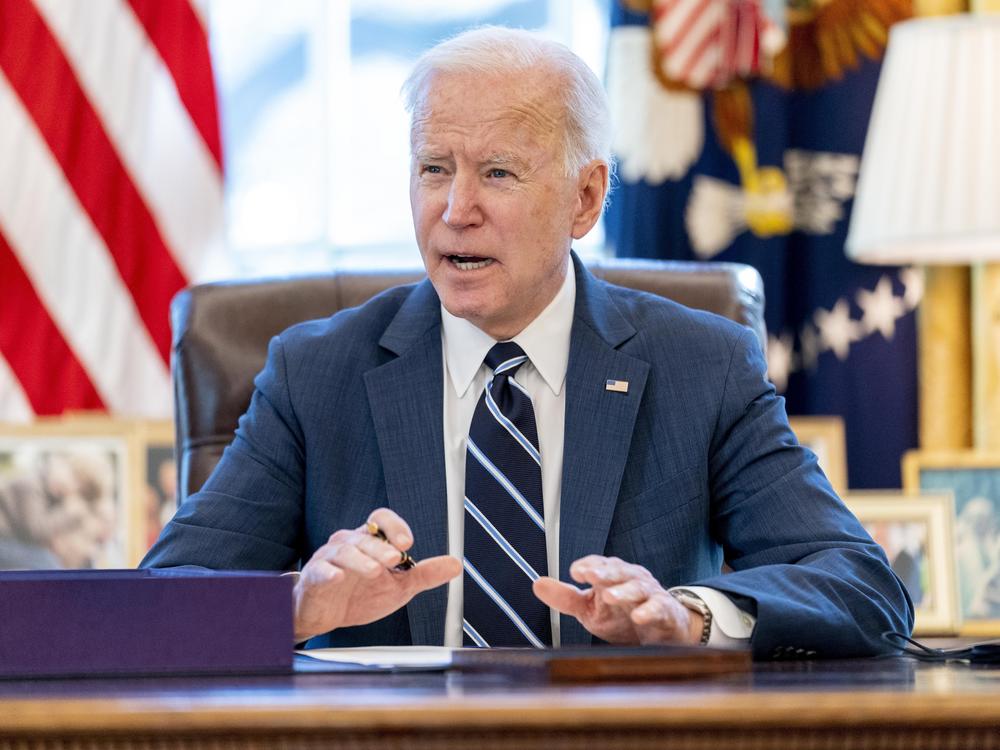Section Branding
Header Content
New Monthly Child Tax Credits Are Starting To Go Out. Here's What It Means For You
Primary Content
Updated July 14, 2021 at 5:35 PM ET
Roughly 39 million American families will begin receiving the first of six monthly installments of the enhanced child tax credit payments on Thursday, providing at least temporary relief for households living below the poverty line.
The program is part of the Biden administration's $1.9 trillion economic aid package called the American Rescue Plan that was passed in March. It increases the existing tax benefit from $2,000 up to $3,600 for younger kids and $3,000 for older ones, for the 2021 tax year.
It also broadens the umbrella of who's eligible for the full refund. In the past, approximately 23 million children didn't qualify because their parents made too little income, making them ineligible for a full refund.
The IRS recently introduced an online tool to help low-income families who don't typically file tax returns register for the program.
"For working families with children, this tax cut sends a clear message: Help is here," President Biden said in a statement in May.
How does it work?
Instead of forcing parents to wait until the following year — after filing annual income taxes — the relief checks are an advance on half of what families would typically be entitled to get.
In this case, eligible families qualify for up to $300 per month for each child younger than 6 and up to $250 for each child aged 6 to 17. So a family with three children ages 5, 7 and 16 could see an extra $800 per month in their bank account through the latter half of the year. The credit goes away once a child reaches 18.
The amounts could be smaller depending on the parents' income, and the IRS said final payment amounts will be determined by 2020 tax returns (or 2019 filings if the 2020 documents have not been processed in time). The agency urges those who have yet to file to do so as soon as possible to make sure they're eligible for the appropriate amount.
Deposits will be made from July through December on the 15th of every month, unless it falls on a weekend or holiday. The payments that represent the first half of 2020 will be provided later in a lump sum. Payments will be automatically deposited into accounts on file with the IRS, without any additional action required.
But the boost is temporary. "Congress must pass the American Families Plan to ensure that working families will be able to count on this relief for years to come," Biden said.
Who is eligible?
Biden estimates that "about 90% of families with children will get this new tax relief automatically."
The IRS offered more concrete guidelines: Married parents filing joint returns, as well as qualifying widows or widowers with incomes under $150,000 are eligible for the full refunds. The increased amounts will be reduced for couples with incomes above that, according to the IRS.
Parents who don't come under the married or widowed categories can make up to $112,500 if they are heads of households and $75,000 for all other individual taxpayers before the benefit is reduced.
People who don't make enough money to pay income taxes can also expect to see more money this year. Under the new tax credit, low-income parents will no longer be docked for part of the credit. And the poorest families, who typically don't benefit from it at all, will also qualify for the full amount.
Parents can check their eligibility through this IRS website.
Can I opt out?
Yes.
The IRS said eligible taxpayers who don't want the advance payments and instead would like to save the full child tax credit until next year will be able to decline the checks.
Families can also use the IRS portal to add or update bank account information, as well as add any children born in the latter half of 2021.
NPR's Merrit Kennedy contributed to this report.
Copyright 2021 NPR. To see more, visit https://www.npr.org.

